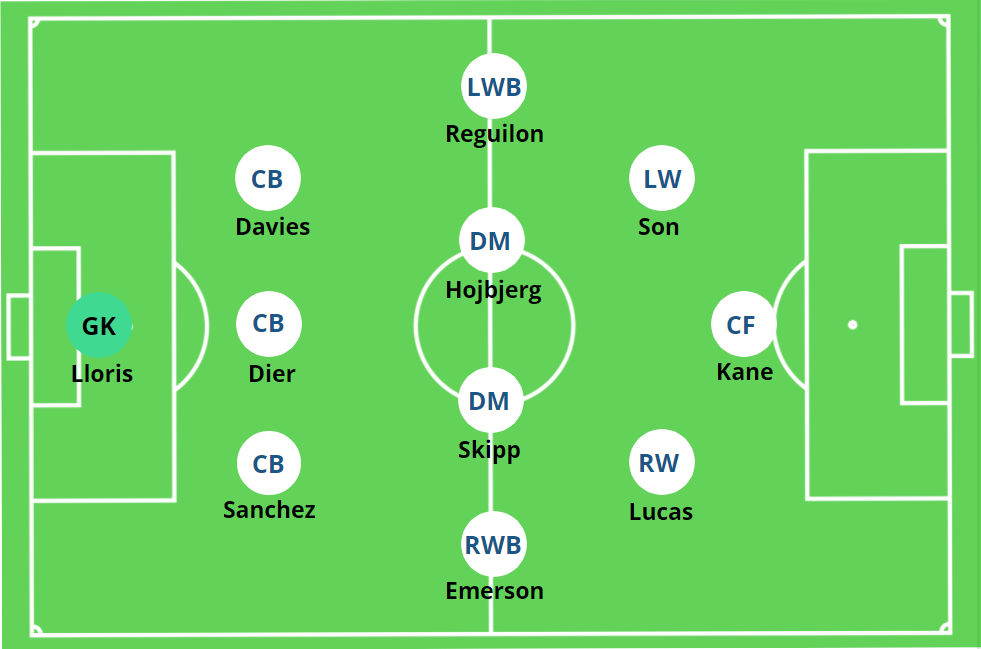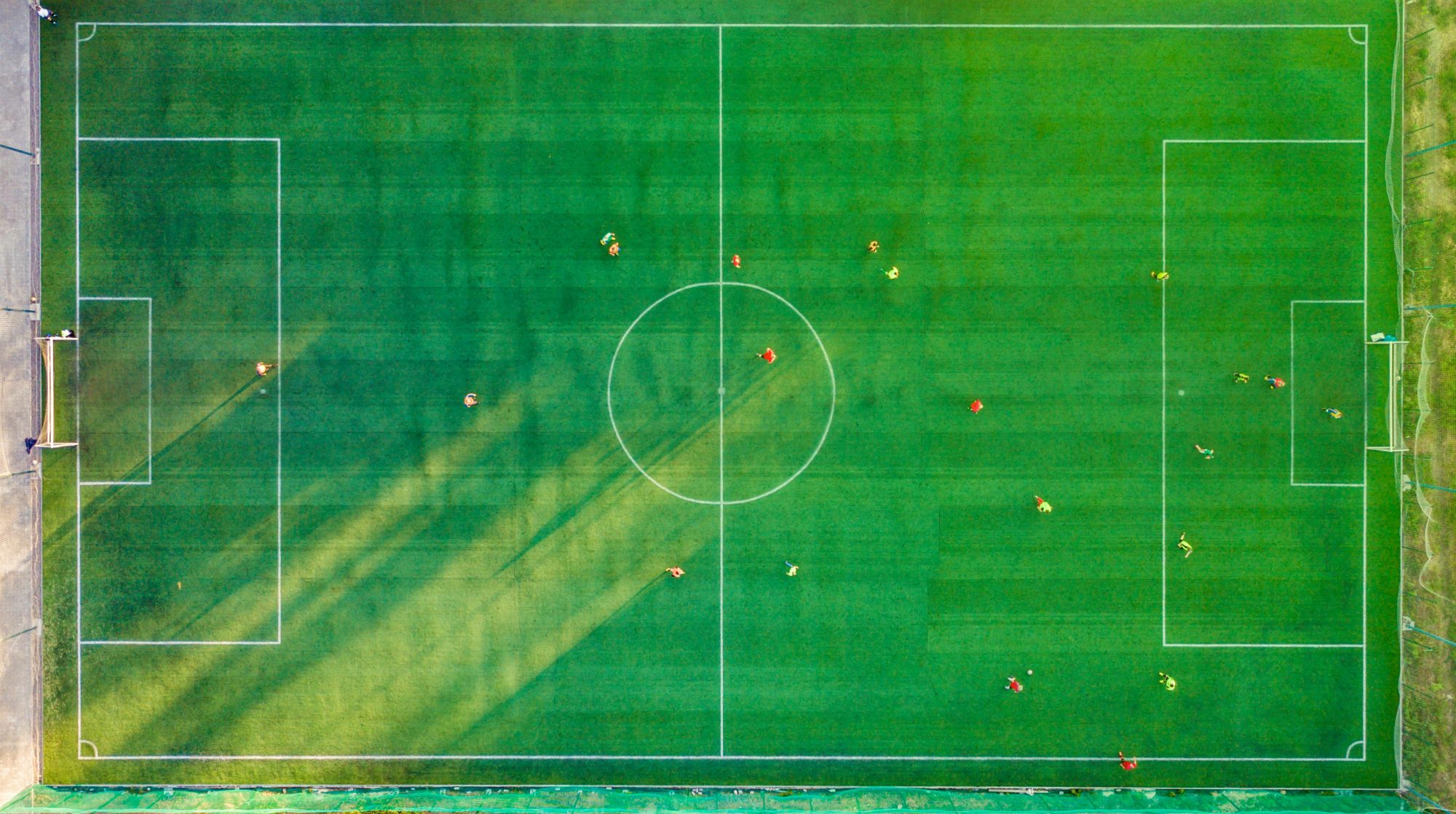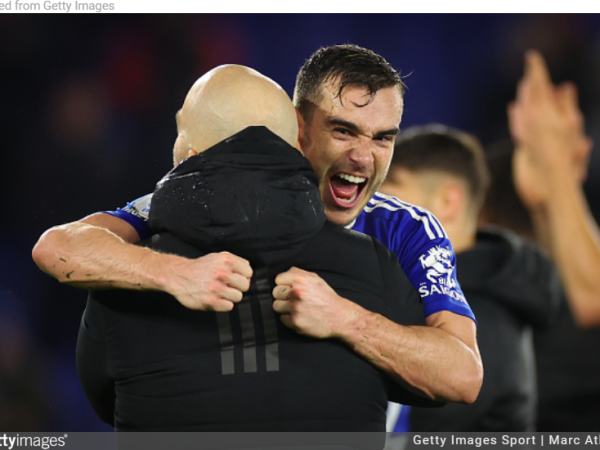It is now two months since Antonio Conte put pen to paper with Tottenham Hotspur, and the signs of improvement are clear. Spurs sit sixth in the table as things stand, in with a real shout of reclaiming Champions League football after three seasons away. Meanwhile, just about every player has upped their game under the influence of the Italian, most importantly, Harry Kane – who is finally firing in front of goal again. So as Conte gets accustomed to his role and his newly inherited squad, we take a look at the Italian’s tactics with Tottenham so far in 2021-22.
SYSTEM OF PLAY: 3-4-2-1

The day Antonio Conte arrived at Tottenham Hotspur, reports were already coming out that he split his team in two to play an 11v11 match in training, with both sides playing 3-4-2-1. Conte is practically synonymous with back-three formations, and it’s no surprise that he’s shown consistency in deploying the 3-4-2-1 in all of his fixtures so far. While we questioned whether or not Spurs had the players to pull it off, Conte has dramatically improved several underperforming players. The key to success for the former Chelsea boss would have been having a chat with Harry Kane and getting him on-side, and it appears the Italian has done wonders in that department. The England captain has scored 3 goals in his last 4 matches, finally looking more and more like the Harry Kane of old. Conte has also shown faith in Lucas Moura, and the Brazilian has completely surpassed expectations with 5 goal involvements in his last 5 games. Heung Min Son has also showcased his quality, with 5 goal involvements from his last 5 in the league too. With a front three that can score at the drop of a dime, Spurs are well set up to have much in the way of success. But the Italian manager still needed to find consistency in the other eight in his eleven, and so far, he’s found exactly that.
Embed from Getty ImagesHugo Lloris has had a decent time under Conte so far, still evidently aging out of form but holding down the number one spot in goal for now. Ahead of him, Eric Dier has looked like a rock, with Conte suggesting he could become one of the best in the world. High praise. Ben Davies has also shown promise on the left of the back three, while Davinson Sanchez has held down the position on the outside right after Christian Romero pulled his hamstring on international duty. In Japhet Tanganga, Conte has another option for his back-three, and a player who could soon grow into the role with greater experience. Wide of the back three have been two key playmakers for the team – Emerson Royal and Sergio Reguilon. Emerson never really stood out under Nuno Espirito Santo, but has lifted off this month with greater attacking freedom. Sergio Reguilon meanwhile always had the makings of a top wing-back, and is fulfilling that promise positively. In midfield, Conte has stuck by Oliver Skipp, who earned his way into Nuno’s early season eleven, and Pierre-Emile Hojbjerg, who we can’t help but wonder how he still has the legs after the monumental amount of matches he’s taken part in this year. Dele Alli’s also seen game time under the Italian, but hasn’t fully burst out of the bubble he created for himself under Jose Mourinho.
Embed from Getty ImagesOn paper and in practice, Antonio Conte has a very decent first eleven. Reinforcements are evidently needed in the summer (if not sooner), but the new Spurs boss has been smart about rotating his squad and giving players a chance to impress when he feels the time is right to do so. The consistency in formation will only help that cause, as each player should have a clear understanding of their role when entering the pitch. Speaking of that clear understanding, let’s now jump into the tactics behind how Conte’s 3-4-2-1 has worked so well.
BUILD-UP
Embed from Getty ImagesAntonio Conte’s team build out from the back through their back-three, or a combination of three players. From time to time, Pierre-Emile Hojbjerg will drop to the left of the three man build, as Ben Davies / the left-sided-centre-back pushes higher. Usually that forward push is high and wide, as Spurs look to overload the left and play into the likes of Reguilon and Son to combine, and later deliver or switch play as they move up the field at speed. This tactic can be used effectively to draw the opposition over to the left, where they will then look to play down the right, with Emerson Royal hugging the touchline and readying himself to play in close proximity to Lucas Moura. After progressing into the opposition’s half, it is not uncommon for Ben Davies or Davinson Sanchez to carry on with their forward movement, either through underlapping or overlapping their wing-back. We haven’t really seen overlapping centre-backs since Chris Wilder’s first Premier League season with Sheffield United, so this has been a refreshing outtake.
Embed from Getty ImagesBut staying focused on their initial build-up for now, there are a few other key mechanisms by which Tottenham look to progress the ball. Hojbjerg demands the ball constantly and wants to get involved as much as possible, but Dier isn’t afraid to bypass him completely and spray a long diagonal directly into a wing-back, or even over top of the opposition’s defense. Dier’s distribution has been supreme since Conte’s arrival, and he’s been given freedom to be that Toby Alderweireld figure in the side. With Dier’s ability to break pressure at the drop of a hat, he poses a serious dilemma for the opposition’s defense. If the opposition press Tottenham high, Dier and the likes of Winks, Skipp or even Sanchez can hit balls over the top and allow powerful runners like Son and Moura to chase. If they don’t press Tottenham high, a player like Dier will have loads of time to get his head up and make those long diagonals even more accurate. With Sanchez also showing the ability to do this out from the back, the opposition’s quest becomes all the more difficult.

The final intriguing note on Tottenham’s build-up is in the role of Lucas Moura. On the left, Heung-Min-Son will often look to attach himself to Harry Kane and create more room for Reguilon and Davies out wide. But Moura routinely drops into pockets of space to play one-two’s, or make a swift turn and explode into space. Under Mourinho, Harry Kane was often the one dropping into midfield to pick up possession. But Conte has cut that out, instead saving Kane’s energy for later on, and ensuring he situates himself closer to goal. Moura’s taken on that responsibility instead, which is a great fit for a man who is so nifty and shifty in possession. In doing so, he only creates more room for Skipp and Hojbjerg to switch play left to right, as the opposition follow Moura and neglect Emerson in the process.
ATTACKING PRINCIPLES
Embed from Getty ImagesUnder Nuno, Spurs scored just 9 goals in 10 Premier League matches. They’ve already surpassed that amount in Conte’s first two months, scoring 13 in his first 7 league matches. Part of that seems to be Conte’s ability to restore faith in Harry Kane and only boost the confidence of those around him. But the principles of play have also improved, with Tottenham improving both their direct and wide penetration en route to goal.
After progressing into the opposition’s half, the centre-backs continue the importance that they demonstrate in build-up phases. Dier will look to hit balls over the top, particularly diagonals into wide areas left uncovered, as the outside centre-backs take turns venturing forward. With Skipp and Hojbjerg covering, Conte’s provided license for his centre-backs to have that Sheffield-like influence on the game. In doing so, his team are able to create greater overloads in wide areas, and draw attention away from the more dangerous players to roam centrally and look for space as the ball makes its way into the box. When one of the inverted wingers gets involved in these wide moves to compound the overload, you can be sure that the other is prowling for space to score in the box.

The downside to this is that it often means Tottenham only have two men in the box to get on the end of crosses, sometimes up against five or six retreating opposition players. Reguilon sometimes looks to burst into the box on the end of right-sided crosses, but Emerson Royal rarely ever seeks space inside the eighteen when its the Spaniard or Son delivering the ball. The wing-backs could therefore use cut-backs more often to find players at the top of the box, such as an outside centre-back continuing their run forward. Otherwise, the likes of Emerson and Reguilon have to be incredibly precise with their delivery. Tottenham have scored three goals from crosses since the arrival of Antonio Conte, so it’s not as though they’ve been ineffective in creating chances from the flanks. But they have perhaps been more effective in relying on other mechanisms for scoring goals, particularly their directness in getting the ball forward.
Embed from Getty ImagesTottenham are at their very best when they can give Heung Min Son something to chase. The South Korean thrives off of passes over the top of an opposition back-line, and his speed is practically unrivalled in the league. But as seen against Liverpool and Palace, it’s not just Son that can thrive off of this more direct approach.

Tottenham’s opening goal in their 3-0 win over Crystal Palace this week came with some brilliant awareness of Palace’s desire to press high. As Spurs soaked up the pressure and Palace pressed, Hojbjerg’s driven pass into Moura took several of their players out of the game and attracted the shadow of James Tomkins. The ball then fell to Emerson, who played his pass into space for his compatriot to chase, where Joachim Andersen had to cover for James Tomkins’ shadow, only opening up more space for Harry Kane as he steamrolled in the box and scored.

Their second goal against Palace again came from Moura breaking pressure, this time as he dropped deep and played a one-two with Skipp in the middle third. Moura then spun in behind and carried the ball at speed several yards. The ball eventually found its way wide as Palace desperately tried to recover position, and Moura climbed high to get on the end of the cross from the play he started. Both of these examples showcase something that Spurs simply need to do more of – play quickly through the thirds and take advantage of a side pressing them high. Against Southampton a few days later, they found it very difficult, with the Saints sitting back in a low-block and waiting for balls to be delivered into the box. Spurs couldn’t play quickly through the thirds as they intended, and their crosses into the box were often met with resistance by Southampton’s tall defense. This is perhaps where Kane’s ability to drop deep and create something special can be useful, but then again, it would take him out of the box where he’s often one of the only men waiting. This is perhaps the one major point of contention Antonio Conte will need to sort out in the coming weeks. They will always have the pace and power to create chances against a high-line. But against sides sitting deep, they may have to find innovative ways of bulging the back of the net. Perhaps that will be in the use of overlapping / underlapping centre-backs, if Conte is willing to get wilder than Wilder.
DEFENSIVE PRINCIPLES
Embed from Getty ImagesWhile the best teams in the league have still been able to carve Tottenham open, Antonio Conte’s shown promise of a rigid defense, without taking away his team’s ability to go on the hunt in attack.
High up the pitch, Conte’s men deploy a 3-4-2-1 block, without much intention of pressing high. They look to create diamond overloads in the wide areas and hold a compact shape, but they don’t ever ramp up the intensity in trying to win the ball on a tackle. Against a back-three, each member of the front-line may have a specific player to watch, as they shuffle across and attempt to stop that player from penetrating into an adjacent midfielder. Against a back four, Harry Kane may jog at the centre-back in possession to stop them from playing long, or screen the team’s defensive midfielder. There really isn’t much intensity to their press, but that hasn’t resulted in utter ineffectiveness. In fact, Spurs have been quite solid in winning their duels and making interceptions in the middle of the pitch.
Embed from Getty ImagesIf the opposition progress into the middle third, Spurs may step up that intensity slightly. Hojbjerg and Skipp are not afraid to get stuck into tackles, and both Emerson and Reguilon are players who like to be more proactive than reactive in stepping out when the ball enters their zone. In the wide areas, the far-sided fullback may hold a more retreated position to track an opposition wide man, as the shape becomes more 4-3-2-1.

They will then try and corner their opposition through those diamond shapes, not allowing the opposition to switch play over to the other side. Given Hojbjerg’s effectiveness in winning the ball and tireless energy, Tottenham will often angle the opposition to his side on the left in particular. The dynamism that the Dane poses is not quite matched on the right, and it means Emerson Royal often takes over in winning 1v1 duels and making tackles in his defensive third more than any other Spurs player.
Embed from Getty ImagesSpeaking of the defensive third, Tottenham’s shape will become more 5-4-1 or 5-2-3 if they are forced back. They leave minimal room in between their lines in these moments, with Eric Dier organizing the movement of the back five up and down to keep players off-side. The now 27-year-old has impressed in that role in a near Conor Coady like way, rarely ever needing to make tackles or interceptions, but instead in constant communication with his fellow defenders in tracking the striker and moving the line up and down. Like Coady, he’s then not afraid to follow the opposition’s striker if they do come deep during build-up phases, knowing the support of at least two others remain in behind.
With these solid principles in place, Conte’s team have been magnificently effective in limiting their opposition’s chances. They’ve conceded just five goals in seven Premier League matches since the former Chelsea man took over, with only Liverpool putting more than one past them.
CONCLUSION
Embed from Getty ImagesAntonio Conte’s Tottenham Hotspur have been a breath of fresh air, with the team now playing some of their best football since the days of Mauricio Pochettino. They’ve scored 13 goals and conceded just 5 in Conte’s first 7 in charge, with Harry Kane firing again alongside a promising cast and crew behind him. Perhaps most importantly, nearly every single player has improved since the Italian joined, and he’s found different mechanisms through which Spurs can score goals and make their magic happen. Whether or not they can claim top four remains to be seen, but for now, Tottenham Hotspur are flying high under Antonio Conte’s influence.
So there it is! A tactical analysis of Antonio Conte’s Spurs. Be sure to check out more of our Premier League analyses, and follow on social media @mastermindsite. Thanks for reading and see you soon!
YOU MIGHT ALSO ENJOY…
Pep Guardiola – Manchester City – Tactical Analysis (2023-24)
This might finally be the year. It might finally be the year that Pep Guardiola and Manchester City don’t win the Premier League. Despite that, they’ve still been the most tactically complex team in the league, carrying on from much of the tactics that brought them a treble-winning triumph last season. Here is what Pep…
Game of Numbers #38 – Alejandro Garnacho’s intensity & awareness
It’s amazing to think that Alejandro Garnacho is only 19 years of age. Sometimes, you can see the rawness in his game. The facets that still need to be carefully developed. But as he ages, let’s hope he never loses his tenacity. His hunger for more. His appetite to win at all costs, even when…
The EFL Championship’s most invigorating title race in years
For the longest time, Leicester City looked favourites for the EFL Championship title. Few competitions in the world of football can match the Championship for drama, but this 2023-24 campaign has now taken on a new level of excitement ahead of Easter Monday’s round of fixtures. Four teams remain in the hunt for the title…
The possible replacements for Erik Ten Hag at Manchester United
Come the end of the season, it may be time for United to make another change at the helm. Gareth Southgate, anyone? That could be interesting. But the England manager has maintained a clear focus on bringing England home some silverware. With that, here are some alternative picks for the job if Ten Hag is…






12 thoughts on “Antonio Conte – Tottenham Hotspur – Tactical Analysis”